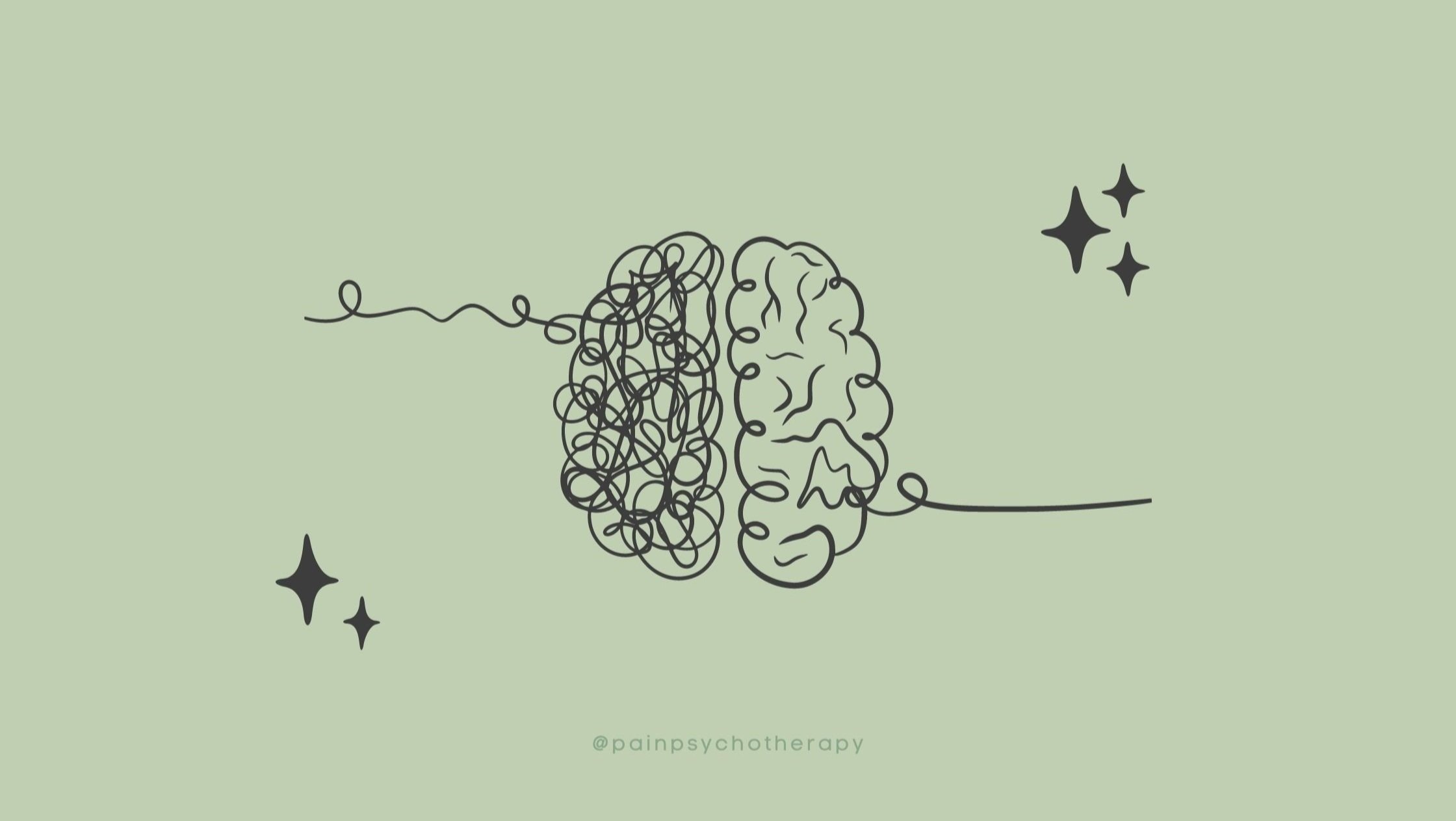Common negative thoughts about our symptoms can sound like1,2:
- “My symptoms are permanent, and nothing I do helps.”
- “My body is becoming more damaged each day!”
- “Something is really wrong with my body!”
- “My symptoms are only going to worsen over time…”
- “This is hopeless, my body can’t do anything!”
So, how can we shift our thinking about pain and symptoms?
In our approach, we support clients in developing safe self-talk about their symptoms, sensations, emotions, and nervous system state.
Safe self-talk about our symptoms can help the brain reappraise physical sensations and situations as safe, instead of dangerous1,2. However, for safe self-talk to work, our words need to be credible! This is why learning how our nervous system works and relating our pain or symptoms to the criteria for neuroplastic symptoms is so important! To learn more, check out our blog post on Criteria for Neuroplastic Pain.
Examples of Safe Self-Talk for Chronic Symptoms:
- “I know I’m ok; my brain is just misinterpreting normal sensations in my body.”
- “I see how my symptoms are inconsistent, moving around, and triggered by emotions. This shows me it’s neuroplastic, and my body is healthy and capable.”
- “I don’t need to control or change these sensations. There is nothing to fix or figure out!”
- “My body is healthy. My brain is just being overprotective.”
- “It’s physically safe to move this way.”
- “I can respond to my symptoms with deep care and compassion.”
- “I don’t need to like these sensations; I just need to remember they’re safe!”
The goal of using safe self-talk is to reinforce to the brain that it’s safe to feel these symptoms, the body is safe, and movement or activities are safe. Over time, this can support the reduction or elimination of our chronic pain or symptoms 1,2. The key to using brain retraining practices effectively is to do them consistently, but not intensely. You can practice safe self-talk throughout the day, each time you notice a negative thought about your pain or symptoms, and also while engaging in somatic practices with pain or symptoms. As you practice this strategy, please know it’s normal to feel danger and not fully believe our safe self-talk at first! Over time, safe self-talk becomes more natural, effective, and believable.
Now it is your turn to create your own safe self-talk for chronic pain and symptoms. Different phrases work for different people; effective and safe self-talk is unique to you and your symptoms. Find the self-talk that feels right for you! Remember to use the neuroplastic pain or symptom criteria you related to when building your self-talk to make it more credible.
If you need support with your healing, book in for a free 20-minute virtual consultation with one of our therapists:
1. Gordon, A., & Ziv, A. (2021). The way out: A revolutionary, scientifically proven approach to healing chronic pain. Sony/ATV Music Publishing LLC.
2. Pain Reprocessing Therapy Center (2021). Pain reprocessing therapy training.








